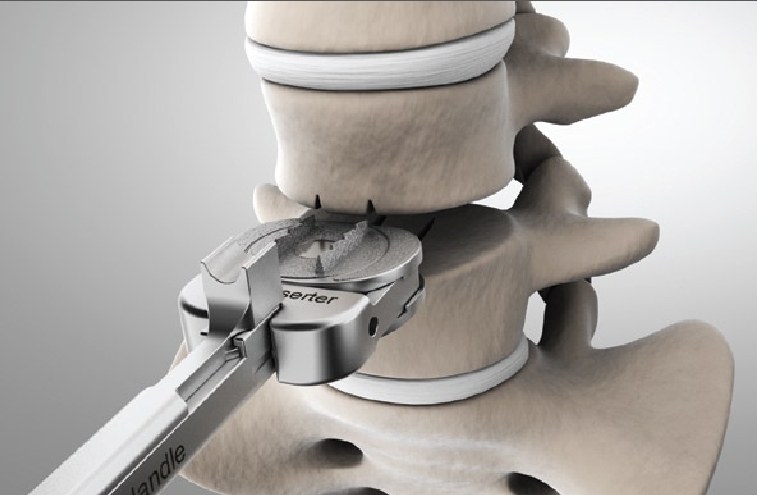Study design:
This was a retrospective study.
Objective:
The objective of this study was to evaluate whether the anatomy of the left common iliac vein (LCIV) affects the radiologic outcomes in oblique lateral interbody fusion (OLIF) at L5-S1.
Summary of background data:
Upward mobilization and retraction of the LCIV is an essential technique in OLIF at L5-S1. However, mobilization of the LCIV is sometimes difficult and may affect the surgical outcomes in OLIF at L5-S1.
Methods:
This study involved 52 consecutive patients who underwent OLIF at L5-S1 and had >1-year regular follow-up. The configuration of LCIV on preoperative axial magnetic resonance images of the lumbar spine was categorized into 3 types according to the difficulty of mobilization: type I (no requirement for mobilization), type II (potentially easy mobilization), and type III (potentially difficult mobilization). Radiologic parameters included anterior/posterior disk heights (ADH/PDH), disk angle (DA), cage migration, cage subsidence, cage position, and fusion rate at L5-S1. Intraoperative/perioperative events associated with OLIF at L5-S1 were reviewed. Radiologic outcomes among the LCIV types were compared.
Results:
There were 19 men and 33 women with a mean age of 62.8±9.7 years. The mean follow-up duration was 24.8±15.5 months. The LCIV anatomy was type I in 25 (48.1%) patients, type II in 14 (26.9%), and type III in 13 (25.0%). The mean ADH increased from 7.0±4.7 to 16.9±4.1 mm at the last follow-up (P<0.001), and the mean PDH increased from 2.7±1.7 to 4.9±1.6 mm (P<0.001). The mean DA increased from 5.4±5.4 to 16.9±6.5 degrees (P<0.001). There were no significant differences in ADH, PDH, and DA at the last follow-up among the LCIV types. Two (3.8%) major and 2 (3.8%) minor LCIV injuries were identified, all of which had a type III LCIV.
Conclusions:
OLIF at L5-S1 showed favorable radiologic outcomes regardless of the LCIV anatomy. However, type III LCIV patients had a high rate of intraoperative vascular injury.

